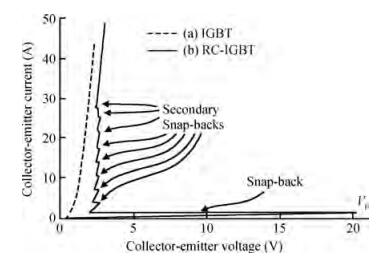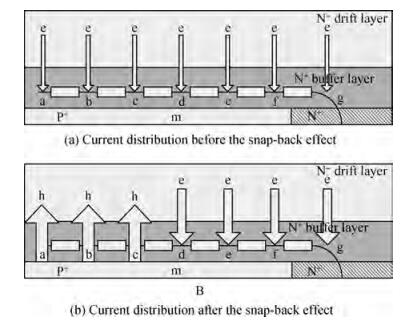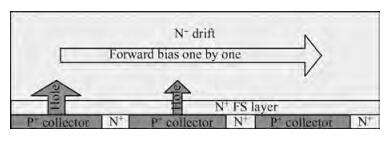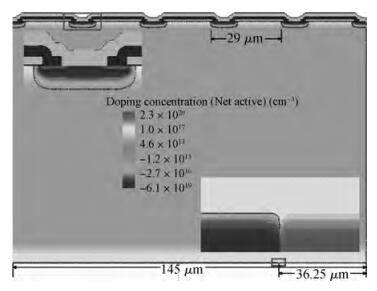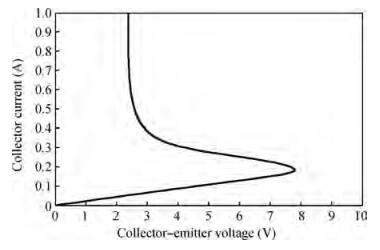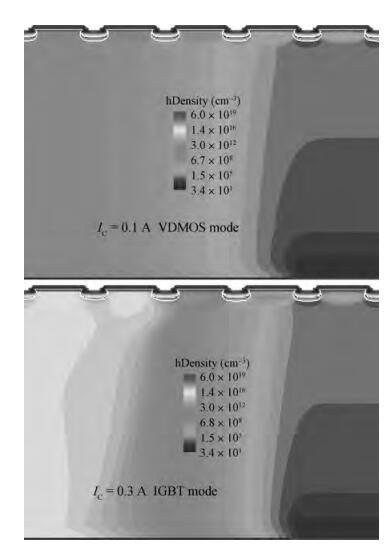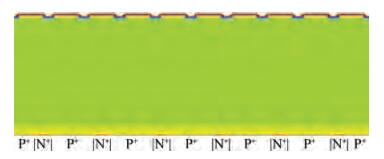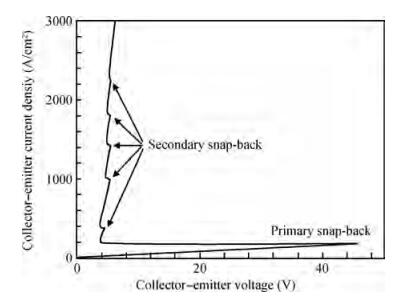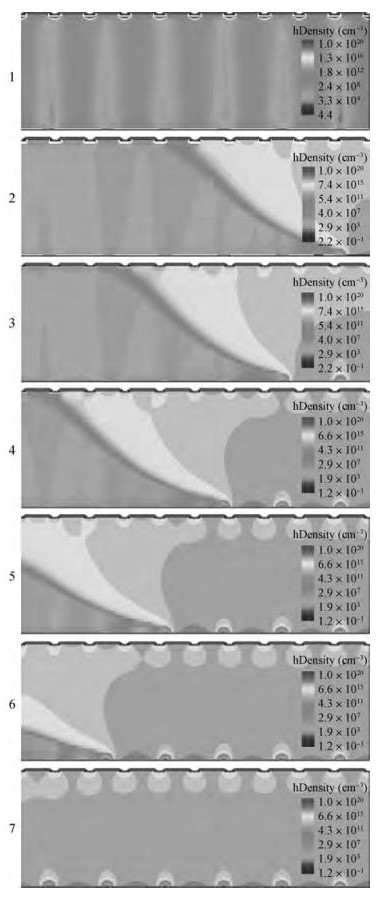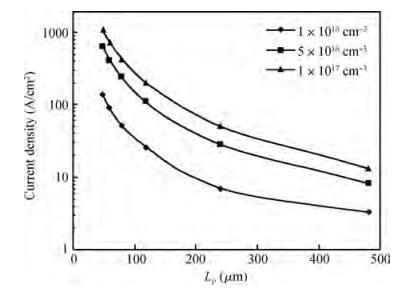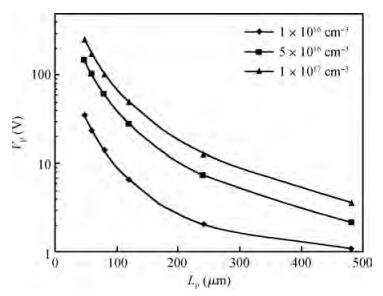| Citation: |
Wenliang Zhang, Xiaoli Tian, Jingfei Tan, Yangjun Zhu. The snap-back effect of an RC-IGBT and its simulations[J]. Journal of Semiconductors, 2013, 34(7): 074007. doi: 10.1088/1674-4926/34/7/074007
****
W L Zhang, X L Tian, J F Tan, Y J Zhu. The snap-back effect of an RC-IGBT and its simulations[J]. J. Semicond., 2013, 34(7): 074007. doi: 10.1088/1674-4926/34/7/074007.
|
The snap-back effect of an RC-IGBT and its simulations
DOI: 10.1088/1674-4926/34/7/074007
More Information
-
Abstract
The RC-IGBT (reverse conducting insulated gate bipolar transistor) is a new kind of power semiconductor device which has many advantages such as smaller chip size, higher power density, lower manufacturing cost, softer turn off behavior, and better reliability. However, its performance has a number of drawbacks, such as the snap-back effect. In this paper, an introduction about the snap-back effect of the RC-IGBT is given firstly. Then the physical explanations are presented with two simplified models. After that, some numerical simulations are carried out to verify the correctness of the models. -
References
[1] Cheng Xu, Wu Yu, Liu Xingming, et al. A new structure IGBT with high performance. Chinese Journal of Semiconductors, 2003, 24(6):586 doi: 10.1002/eej.4391240405/abstract[2] Chu Weili, Zhu Yangjun, Zhang Jie, et al. SPT+-IGBT characteristics and optimization. Chinese Journal of Semiconductors, 2013, 34(1):014005 doi: 10.1088/1674-4926/34/1/014005[3] Wu Yu, Lu Xiuhong, Kang Baowei, et al. A novel low power loss IGBT (LPL-IGBT) and its simulation. Chinese Journal of Semiconductors, 2001, 22(12):1565(in Chinese) http://www.oalib.com/paper/1519507[4] Baliga B J. Enhancement-and depletion-mode vertical-channel MOS gated thyristors. Electron Lett, 1979, 15(20):645 doi: 10.1049/el:19790459[5] Wang Bo, Tan Jingfei, Zhang Wenliang, et al. A simulation study on a novel trench SJ IGBT. Journal of Semiconductors, 2012, 33(11):114002 doi: 10.1088/1674-4926/33/11/114002[6] Darwishand M, Board K. Lateral RESURFED COMFET. Electron Lett, 1984, 20(12):519 doi: 10.1049/el:19840360[7] Benda V, Gowar J, Grant D A. Power semiconductor devices:theory and applications. Chichester:John Willey & Sons, 1999[8] Baliga B J. Fundamentals of power semiconductor devices. New York:Springer Science and Business Media, 2008[9] Khanna V K. The insulated gate bipolar transistor (IGBT) theory and design. New Jersey:IEEE Press, 2003[10] Rulthing H, Hille F, Niedernostheide F J, et al. 600 V reverse conducting (RC-) IGBT for drives applications in ultra-thin wafer technology. Proc ISPSD, 2007:89 https://etrij.etri.re.kr/etrij/journal/article/pubreader.do?volume=35&issue=4&page=603&fileId=SPF-1374798117422[11] Rahimo M, Klaka S. High voltage semiconductor technologies. 13th European Conference on Power Electronics and Applications, Barcelona, 2009:1 http://ieeexplore.ieee.org/document/5279073/[12] Storasta L, Kopta A, Rahimo M, et al. A comparison of charge dynamics in the reverse-conducting RC IGBT and bi-mode insulated gate transistor BiGT. Proc ISPSD, 2010:391 https://www.jstage.jst.go.jp/article/elex/14/17/14_14.20170677/_pdf[13] Storasta L, Rahimo M, Bellini M, et al. The radial layout design concept for the bi-mode insulated gate transistor. Proc ISPSD, 2011:56 https://www.infona.pl/resource/bwmeta1.element.ieee-art-000005158057[14] Takahashi H, Yamamoto A, Anon S, et al. 1200 V reverse conducting IGBT. Proc ISPSD, 2004:133[15] Rahimo M, Schlapbach U, Schnell R, et al. Realization of higher output power capability with the bi-mode insulated gate transistor (BIGT). EPE, 2009[16] Rahimo M, Kopta A, Schlapbach U, et al. The bi-mode insulated gate transistor (BiGT)——a potential technology for higher power applications. Proc ISPSD, 2009:283 http://ieeexplore.ieee.org/xpl/articleDetails.jsp?reload=true&tp=&arnumber=5279012&openedRefinements%3D*%26filter%3DAND%28NOT%284283010803%29%29%26pageNumber%3D5%26rowsPerPage%3D100%26queryText%3D%28power+transistors+%29metadata -
Proportional views





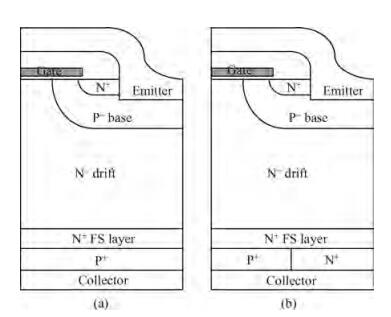
 DownLoad:
DownLoad:
